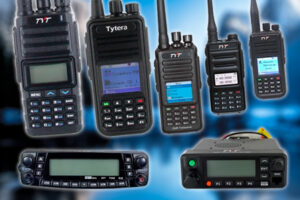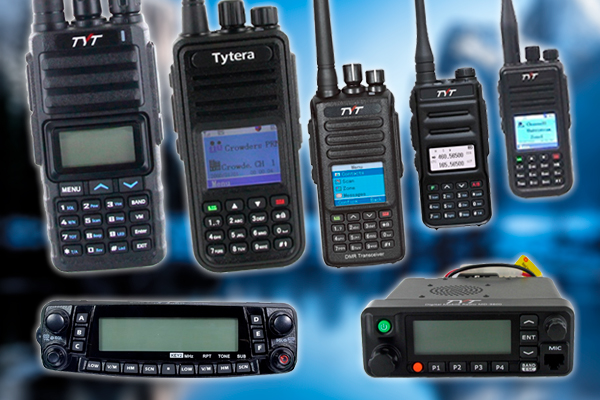
There is one frequently asked question that, until the last year or so, was rarely asked at all. Now we hear it at least once almost every day. Is it superhet? Lately we've been asked this question in regards to radios made by TYT. This is not information that is typically provided by a manufacturer voluntarily. So, we had to ask them directly. Which TYT radios have a superheterodyne receiver? Here was their answer.
The table below lists the TYT radios we carry and the type of receivers they use.
| TYT Radio Receiver Specifications | |||||
|---|---|---|---|---|---|
| Model | Service | Band | Form Factor | Analog/Digital | Receiver |
| TH-350 | Amateur | Tri-Band | Handheld | Analog | Direct Conversion |
| TH-9800 | Amateur | Quad Band | Mobile | Analog | Superheterodyne |
| TH-UV88 | Amateur | UHF/VHF | Handheld | Analog | Direct Conversion |
| MD-380 | Amateur | UHF/VHF | Handheld | Digital | Superheterodyne |
| MD-390 | Amateur | UHF/VHF | Handheld | Digital | Superheterodyne |
| MD-9600 | Amateur | UHF/VHF | Mobile | Digital | Superheterodyne |
| MD-UV380 | Amateur | UHF/VHF | Handheld | Digital | Direct Conversion |
















Digital receivers have an advantage when used for DMR, or any digital mode. They can be configured to have an I and Q output. Digital decoders love that. Analog mode is noisier though.
My comment is a question. Is there any difference between superheterodyne and system on a chip in regards to an EMP event? Some of us have radios and other items stored in faraday enclosures. Depending on the strength of the EMP, the enclosure might not provide total protection. Is one system more resilient to EMP that another?
Thanks Mark
Hi, it's a very good question. I don't recall any specific tests on the resiliency of either one in the case of exposure to an EMP, however, I don't think it would matter too much simply because the receiver isn't the only component in the radio that could prevent it from operating in case of exposure. Other electronics that manage the display, memory, and basic functions of the radio may be affected, as well as the power source, such as the battery. In addition, the antenna is a consideration because this would be the most likely entry point for electromagnetic energy to enter the radio, and since the antenna is directly connected to the main board, there would be no stopping an EMP from accessing any and all of the internals. In that scenario, the type of receiver, whether superheterodyne or SoC, would be inconsequential. An EMP event would likely affect it all.
Practically any radio receiver over the past 50 years, has had a super hat receiver. Now, some of this radios are being made as SDR radios, slightly higher cost in pennies, but easier to supply in the product chain. Quality of performance is the same or better using an SDR radio. Most of the commercial radios you buy nowadays that are new are going to SDR-based. Look at any of your Motorola Tate or other two-way radio manufacturers and you will see they've already gone to SDR in many cases.
Certainly no big claim to fame to be using old technology that may not be a better quality.